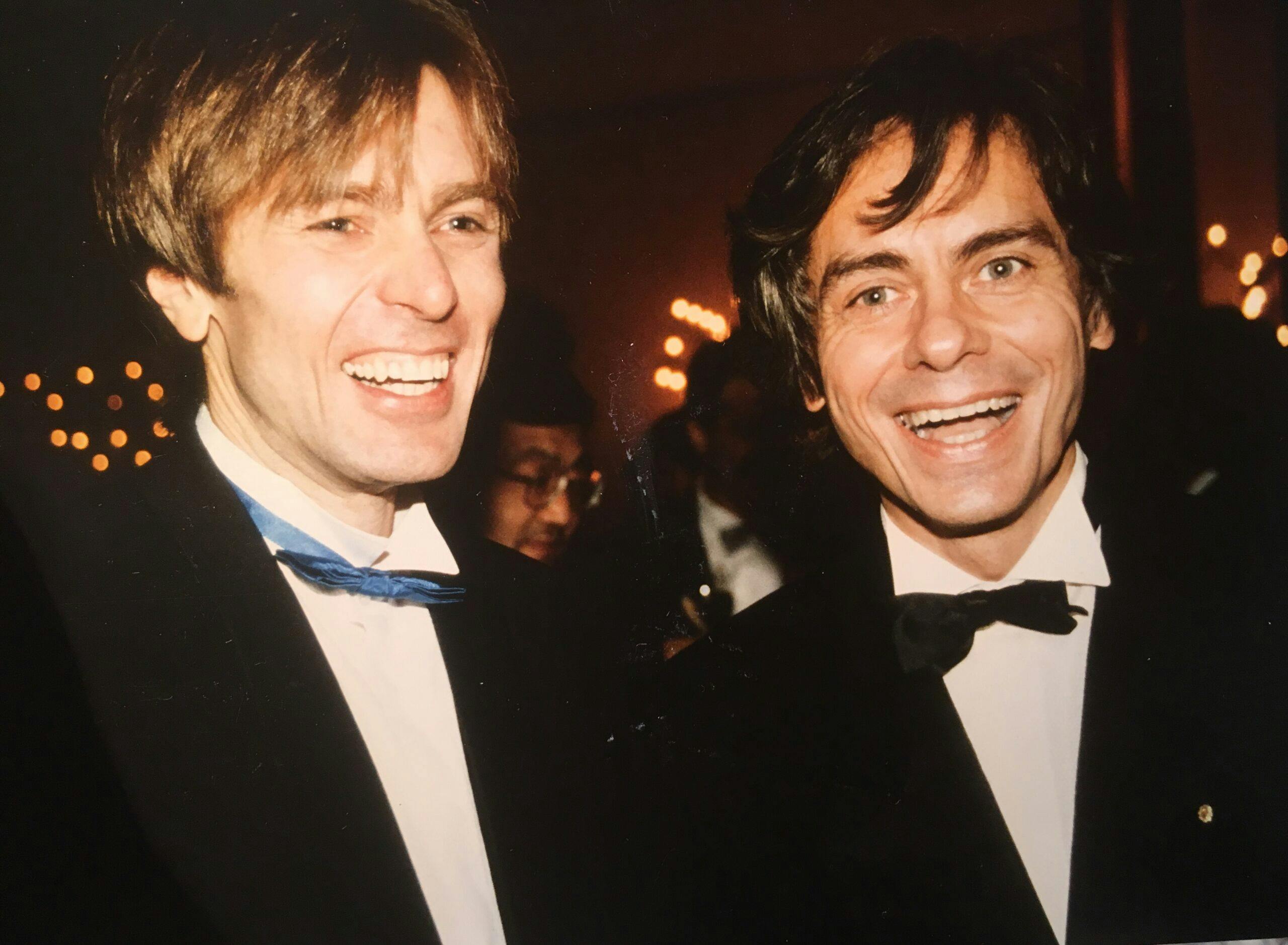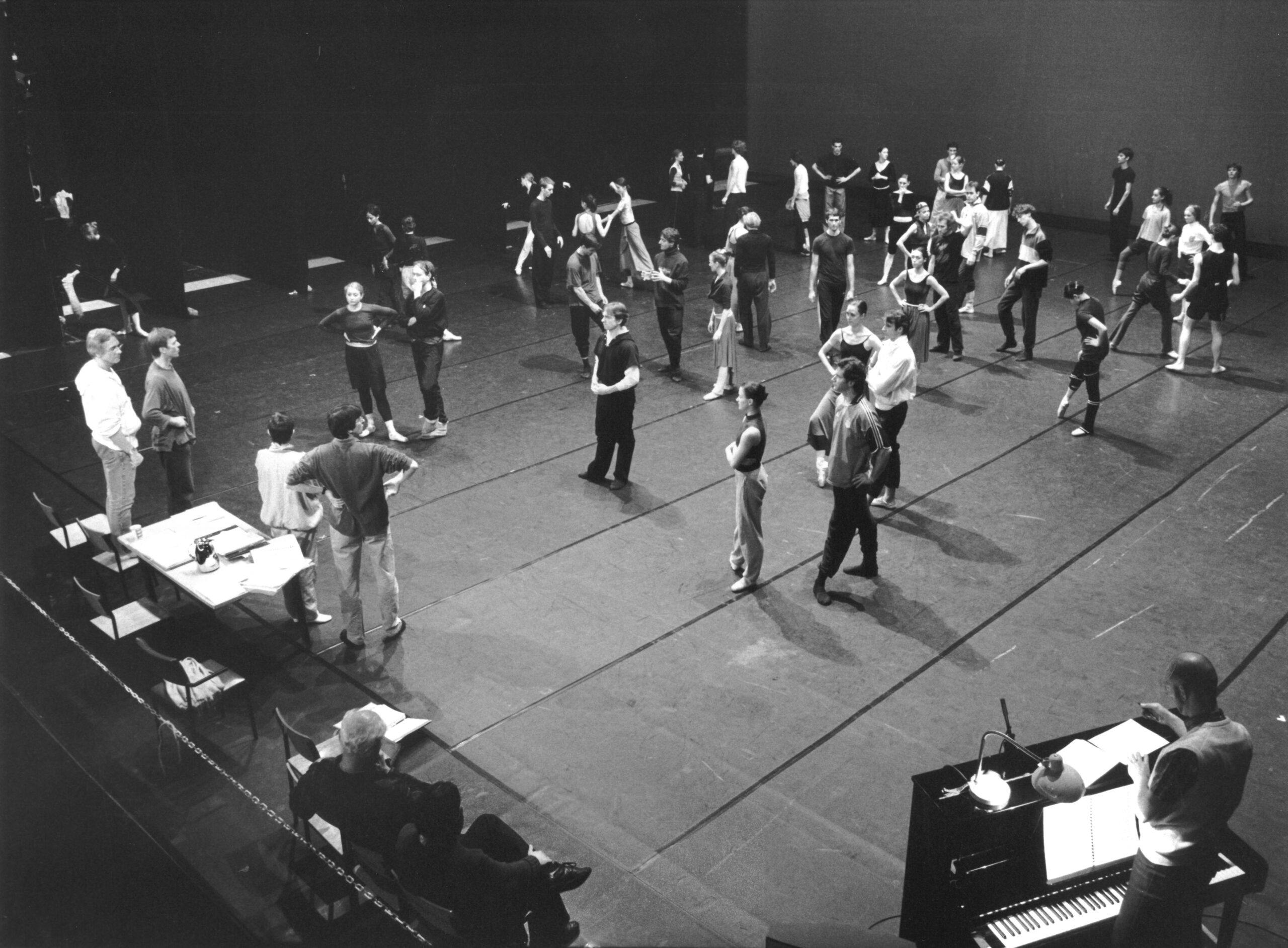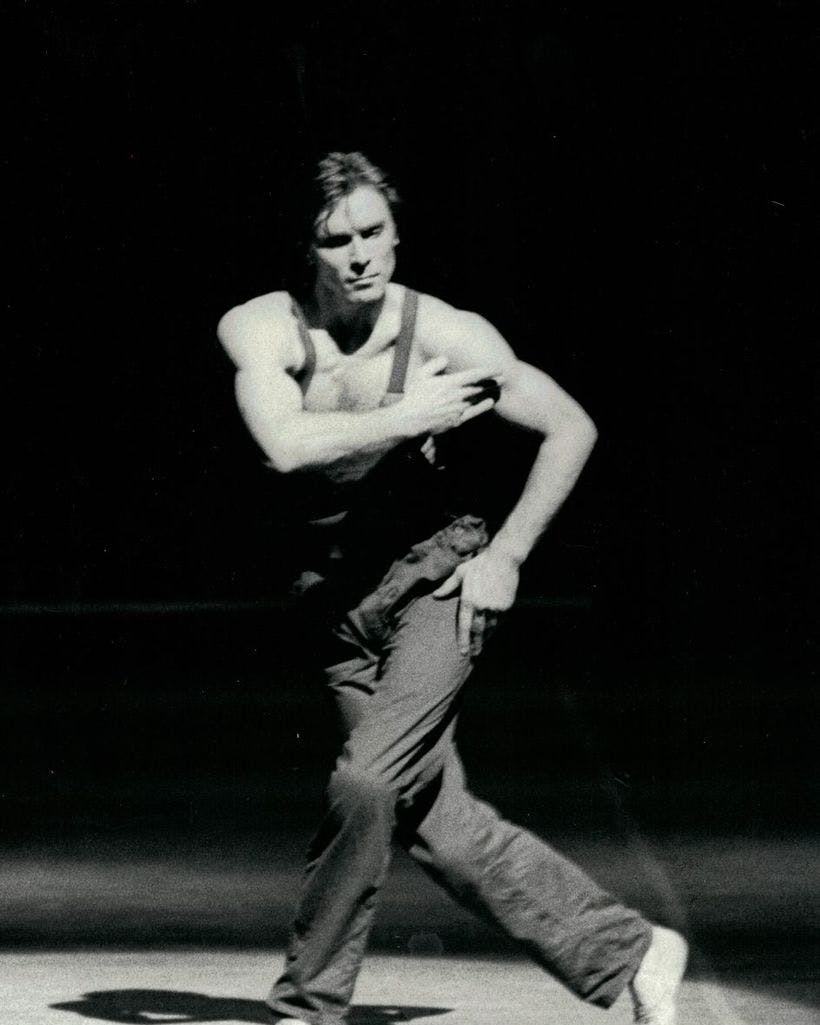Essay
The Perceived World – John Neumeier, a Portrait from Munich
by Anna Beke
"John is like a catalyst. My career, not only as a dancer, has a lot, has everything to do with him. We met in 1977. Ever since, it has been an exploration of his world of ideas, movements, struggles, and ideals - in the ballet studio, on stage, and on the road." – Ivan Liška

On the road, in the same place, or around the world. John Neumeier doesn’t need to travel long distances to embark on a journey with his dancers from the Hamburg Ballet, to be constantly on the move and searching together with them. For over half a century, the master choreographer (*1939 Milwaukee, USA) has been artistically revered not only here in Germany but worldwide. Throughout these years, he has remained loyal to his company, where he has been ballet director and chief choreographer since 1973 – a company that truly is ‘his’, built by him, fought for, and loved. Since Marius Petipa, no other choreographer in the history of ballet has been as intensively connected to a company for as long as he has. Indeed, no other choreographer has become such an artistic figurehead of a ballet company in Germany as Ballet Director John Neumeier. As a sign of appreciation for his great achievements in this country, the Hamburg resident was awarded the German Dance Prize twice in 1988 and 2008, making him the only dance artist to receive this honour twice. But these are just a few of the many superlatives when it comes to the exceptional artist John Neumeier.
Home by the River Isar
Neumeier appears so strongly connected to the Hamburg Ballet, and the establishment of its unique identity, that one almost forgets how many other companies – unlike George Balanchine with the New York City Ballet, for example – he has entrusted creations to or won victories with. One of them is the Bavarian State Ballet, which proudly presents, as if they were crown jewels, a handful of Neumeier’s ballets from his vast oeuvre of over 170 works in its repertoire. Ivan Liška, artistic director of the Bavarian Junior Ballet Munich, describes these balletic creations as “staple repertoire” and “indispensable works” that are just as much a part of Munich as John Cranko’s three sacred masterpieces, serving as the artistic flagship of the company. Konstanze Vernon once expressed euphorically, “Shall I begin with […] the joy I still feel today that John brought such special brilliance to the years of my ballet direction by leaving ‘my company’ two of his truly most beautiful ballets: «A Midsummer Night’s Dream» and «The Lady of the Camellias»? Gifts that provided our dancers with the most challenging of roles and audiences with unforgettable evenings?”
But even before Vernon’s era, Neumeier’s ballets were danced with enthusiasm in Munich: After ballet director Roland Hynd had seen Neumeier’s first 1971 version of «The Nutcracker» in Frankfurt, he was determined to bring the ballet to Munich. He therefore persuaded the young American choreographer to create a revised version for the Bavarian capital – with new costume and set design by Jürgen Rose and a specially created ‘barre pas de deux’ for Vernon – henceforth a centrepiece of the ballet. The premiere of the newly restaged version was celebrated on 8th May, 1973, and danced by the then Bavarian State Opera Ballet. Under Liška leadership, two classic reinterpretations, «A Cinderella Story» (Premiere Bavarian State Ballet, April 4, 2000) and «Illusions – like Swan Lake» (Premiere Bavarian State Ballet, April 21, 2011) have since complemented the Bavarian State Ballet’s repertoire; Liška describes the latter addition as a real “homecoming”. Neumeier’s «Illusion – like Swan Lake» represents a biographical approach to the historical figure of the Bavarian fairy-tale king Ludwig II, whom Neumeier merges with the fictional character of Siegfried, thus giving the role a more realistic stage presence and offering the audience a figure to identify with. That the prince becomes a human, follows a core idea of Neumeier’s choreographic work: “I have to believe in people, have to be able to love them, in order to choreograph,” Neumeier stated, emphasising the essential humanistic content and value in all of his pieces – no matter how diverse his works and choreographic interpretations may be. Liška adds: “The unspoken power to improve and shape the world in a humanistic way is most striking. While watching a ballet by John Neumeier, people may not notice it immediately, but they always resonate long after.”
In addition to the five ballets included in Munich’s ongoing repertoire, Neumeier, who always saw himself in direct exchange with the dramaturgy of music and spoken theatre, also directed the Giuseppe Verdi opera «Otello» at the Bavarian State Opera (October 31, 1977). This unique operatic event is representative of the many fruitful artistic collaborations Neumeier had with Jürgen Rose, to whom the choreographer owes the sets and costumes of his most beautiful and in many ways perhaps his most important works – some of them firmly anchored in the Munich ballet repertoire.

John Neumeier and Ivan Liška.
Two decades of seeking together
Exactly ten years after his engagement with the Stuttgart Ballet – from 1963 onwards – Neumeier ended his tenure as director of the Frankfurt Ballet (1969-1973) following August Everding’s call to the north and began building his life’s work in Hamburg. Only three years after taking over the directorship, he met Ivan Liška, who had caught Neumeier’s attention from the audience while performing in the Munich premiere of Peter Wright’s 1976 production of «The Sleeping Beauty». The Hamburg Ballet director offered him and his almost-wife Colleen Scott an engagement, of which the two artists accepted. “That was what we were looking for: to be part of a company where new things were being created.” And so, Liška soon began to travel regularly between the Isar and the Elbe, together with John Neumeier breathing life into the role of Lysander from «A Midsummer Night’s Dream»: “Creations were always completely fruitful for me. You stand in the ballet studio, there is music, and then there are no longer two bodies or two people, but instead an idea that we allowed ourselves to be seduced by.”
Liška’s embodiment of the gardener was to become one of his signature roles, and «A Midsummer Night’s Dream» one of the 53 ballets he danced as principal dancer in Hamburg over the next two decades from 1977 to 1998. Another highlight of this era was the award-winning 1986 film adaptation of «The Lady of the Camellias», in which Liška interpreted the impetuous Armand alongside Marcia Haydée. The title character from «Odyssey» is also one of the roles Liška created and danced at the premiere in 1995: “In the first solo, Odysseus stands symbolically in a position like one of the Doric statues. There is no movement in the figure. And this static form had to be brought into life – that was a real journey. A dancer is supposed to dance, but this monument of Odysseus was standing still. When the first initial movements emerged, I thought the role was co-created. But probably this was also a gift from the choreographer, to set the task in a way that you think you came up with it yourself. But in end effect it was the satisfaction of the creative partnership flowing smoothly.” On the occasion of his 85th birthday on 24th February, Neumeier prepared a great gift for himself with «Odyssey» bringing his almost 30-year-old work back to the stage of the Hamburg State Opera – a ballet that seems particularly significant and relevant in these times.
If Ivan Liška would have to choose one of the many roles entrusted to him by Neumeier, he would stumble: “It’s really difficult to decide; Lysander spreads certain frequencies, Peer Gynt is a particular type of character, Armand or Odysseus are again different, as are the nameless heroes of the ‘Mahler Symphonies’. What one can imagine as ‘love and sorrow and world and dream’, everything is included, and I wouldn’t want to miss any of these characters or colours. Yes, it was a challenging time in Hamburg, but that’s how we worked. And why shouldn’t it be demanding?”
The Bavarian Junior Ballet Munich dances «Bach-Suite 3» (1981)
Setting the bar too high is a credo that Liška also considers essential for the young artists of his Bavarian Junior Ballet Munich: “I don’t know which companies they will join, but we all, as John’s dancers, have experienced and learned musicality, inventiveness, or richness of forms in movement, and I know what a positive acquisition that is, something that remains in your body your entire life.” After ballets by Jiří Kylián, Hans van Manen, Richard Siegal, amongst others, the young professionals now present their first work by John Neumeier at the upcoming Spring Matinées, as Ivan Liška’s personal homage to his former mentor and director, who will step down from his position at the end of this season.
The performance of «Bach-Suite 3», set to Bach’s Suite No. 3 in D major (BWV 1068) is a rarity in two respects: On the one hand, its predecessor «Bach-Suite 2» (Premiere May 18, 1980) is the only piece Neumeier originally created for the Bavarian State Ballet, and on the other hand, Munich’s audiences are hardly familiar with the multitude of choreographic miniatures from Neumeier’s diverse encyclopaedic oeuvre. With the exception of the “Portrait John Neumeier” ballet evening (Premiere Bavarian State Ballet, March 23, 2003), which featured three shorter Neumeier works («Dawning» / Alexander Skrjabin, Premiere May 3, 1972 Frankfurt Ballet; «In the Blue Garden» / Maurice Ravel, Premiere January 16, 1994 Hamburg Ballet; «Jupiter Symphony» / Wolfgang Amadeus Mozart, Premiere April 19, 1991 Hamburg Ballet), Munich’s repertoire only includes his full-length narrative reinterpretations of ballet classics or literary adaptations. And indeed, Neumeier is often revered primarily as a master of the ‘grand form’: “[It] appeals to me, to choreograph new large-scale ballets for an entire ensemble, to create modern, playable repertoire for a large company.” However, narrative is by no means limited to the ‘grand form’: “Emotion, situation, relationships – ballet has always been a drama for me,” explains Neumeier. In all his ballets – whether they be narrative, symphonic, abstract or sacred – Neumeier’s deep humanistic understanding and fascination with the human soul always shine through: “John is for me a choreographing psychoanalyst who even penetrates the perceived worlds of the characters. That’s why his stage constellations are often so heart-rending and touching because they depict something that one may not dare to do in one’s own life. That’s the secret of theatre.”
The ballet «Bach-Suite 3», created for ten dancers, captivates as a choreographic ‘gem’ with its beautiful form and clear lines in the neoclassical ballet movement language, tells much without ‘telling’. Moreover, this work may also be understood as one of Neumeier’s homages to Johann Sebastian Bach, whom the Hamburg Ballet director was intensively engaged with at the time of the ballet’s creation: others included «St. Matthew Passion» (1980/81), as the beginning of his spiritually-sacral works, «Vaslav» as a tribute to favourite dancer Vaslav Nijinsky (1979), «Magnificat» (1987) as well as in later years «Christmas Oratorio I-VI» (2007/2013) and most recently «Dona Nobis Pacem» set to the B minor Mass (2022). It was time to introduce the juniors not only to the musical language of Bach but also to Neumeier’s movement language, which, according to Ivan Liška had decisively influenced and shaped him artistically. “It is now time that they all encounter Neumeier’s work, making the experience and feeling in their own bodies.”

Bringing things full circle
With the handover of «Bach-Suite 3» to the Bavarian Junior Ballet Munich as a homage to the departing Hamburg Ballet director, Ivan Liška closes another life circle connected to the person Neumeier: Once a very young dancer in 1977, he had ‘left’ the Bavarian State Opera Ballet for his engagement in Hamburg, and now he himself, around 40 years later, said goodbye to his company of the Bavarian State Ballet as director with Neumeier’s pinnacle work «Illusions – like Swan Lake» in 2016. When asked if this was a coincidence, Liška smilingly replied, “Of course, it was written in the stars. Full-stop. I mean, such things don’t happen by chance, no, and even if it’s a coincidence, it’s still intended by someone.”
Ivan Liška looks forward to the Hamburg Ballet’s time ‘after’ John Neumeier with excitement and expectation, but to this day he himself looks back with gratitude and humility upon the two decades of shared work and enduring connection with John Neumeier: “Even if we spoke a lot, we sought even more in movement – and discovered. And I wish the young dancers of the Bavarian Junior Ballet Munich the same. Because after the level of difficulty comes the level of ease, which they will achieve for their future, and in any case for the performance.”















